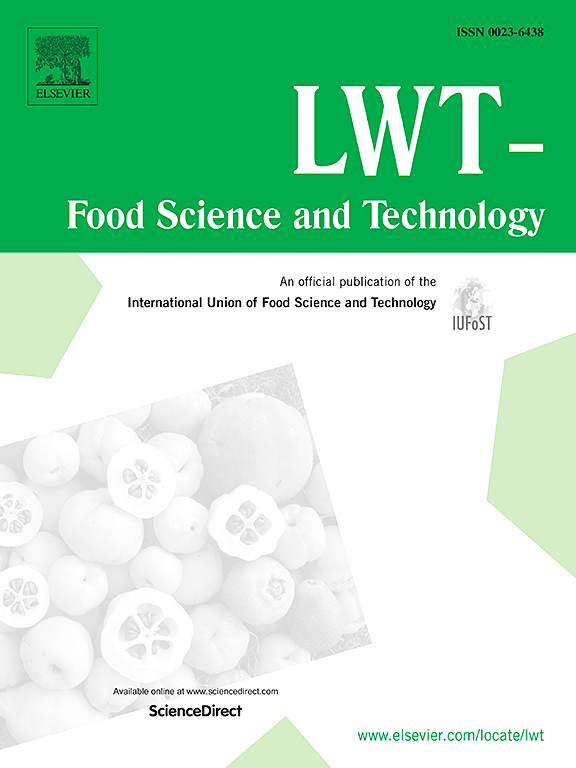Infrared drying effects on the quality of jujube and process optimization using response surface methodology
IF 6
1区 农林科学
Q1 FOOD SCIENCE & TECHNOLOGY
引用次数: 0
Abstract
This study developed a specialized laboratory-scale apparatus utilizing infrared technology to optimize the infrared drying process and investigate water transfer dynamics and structural transformations during infrared radiation drying (IRD) of jujube. Key parameters, including rehydration ratio, color deviation, and Vitamin C (VC) retention rate, were assessed for Xinjiang gray jujube were assessed. Additionally. Comparative analyses were conducted to evaluate microstructural, physicochemical, and volatile component differences between IRD and hot air drying (HAD) methodologies. Response surface analysis was employed to optimize IRD parameters. The results identified optimal conditions as an infrared temperature of 55 °C, a loading capacity of 490 g, and an infrared radiation distance of 11 cm, resulting in a rehydration ratio of 1.75, a color deviation of 3.01, and a VC retention rate of 59.10g/100g. IRD demonstrated superior performance compared to HAD, with a 34.88g/100g improvement in VC retention rate and a 42.90g/100g reduction in drying time. Additionally, jujube dried using IRD exhibited a denser microstructure than those dried by HAD. These findings highlight the effectiveness of IRD in accelerating drying processes while maintaining high jujube quality, thereby providing a robust theoretical foundation for future jujube drying research.
求助全文
约1分钟内获得全文
求助全文
来源期刊

LWT - Food Science and Technology
工程技术-食品科技
CiteScore
11.80
自引率
6.70%
发文量
1724
审稿时长
65 days
期刊介绍:
LWT - Food Science and Technology is an international journal that publishes innovative papers in the fields of food chemistry, biochemistry, microbiology, technology and nutrition. The work described should be innovative either in the approach or in the methods used. The significance of the results either for the science community or for the food industry must also be specified. Contributions written in English are welcomed in the form of review articles, short reviews, research papers, and research notes. Papers featuring animal trials and cell cultures are outside the scope of the journal and will not be considered for publication.
 求助内容:
求助内容: 应助结果提醒方式:
应助结果提醒方式:


